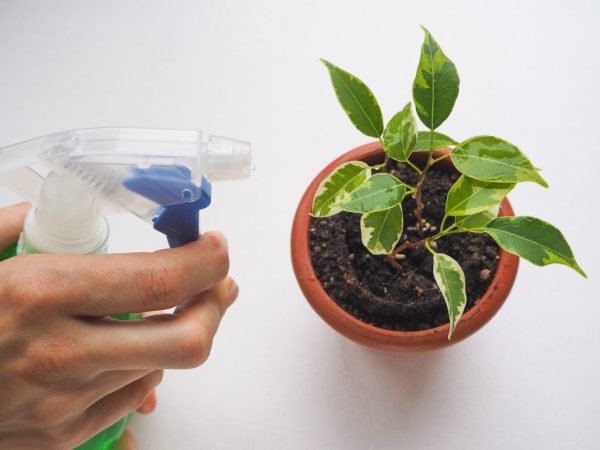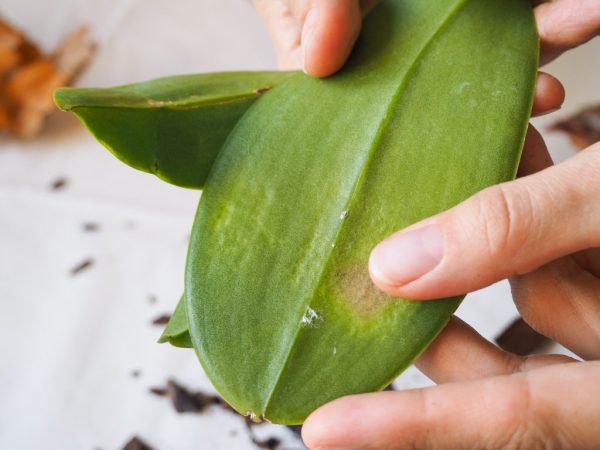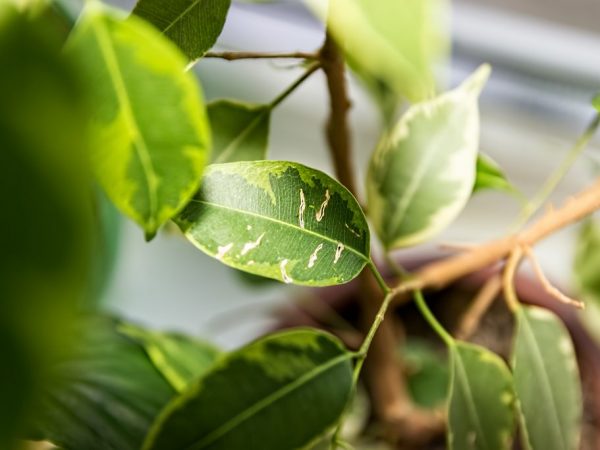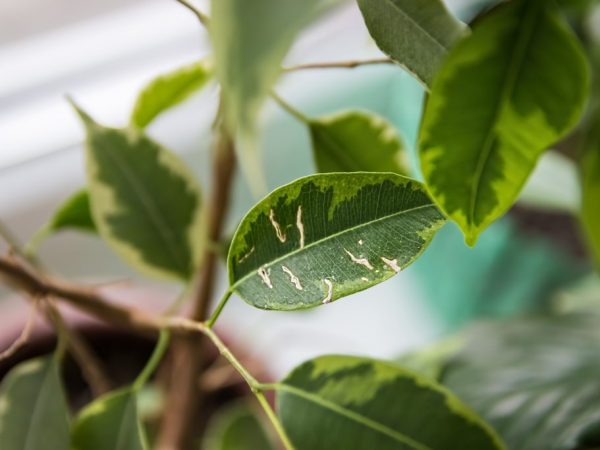Diseases and treatments for ficus
Ficus is especially popular among home ornamental bush flowers. Caring for it is quite simple, however, like many flowers, it is prone to various diseases. Ficus diseases are quite simple, their causes are mainly poor conditions of detention, lack of prevention or a sick flower in the neighborhood.

Diseases and treatments for ficus
Treatment of the bush largely depends on the nature of the disease. In some cases, florists recommend using medicinal rubbing and spraying, but sometimes the plant has to be cut at the root, since this is the only way to save the flower.
Causes of diseases
Why do ficuses get sick? This is facilitated by various factors, but most often the wrong flower care is to blame:
- lack of light and strong temperature fluctuations;
- dry air;
- non-compliance with the irrigation regime: too much water or a lack of it;
- lack of mineral feed or excess fertilizer;
- soil unsuitable for the appearance of a flower.
If the plant begins to wilt and shed its foliage, the conditions of its maintenance should be checked. At first, it is worth changing the location of the pot and revising the watering regime.
If, after a few days, the ficus continues to die, pests or fungus have become the cause of the ficus disease. In this case, it is necessary to inspect the leaves and branches for stains or mold. Their presence indicates harmful insects. Depending on the cause of the disease of ficuses, their treatment also differs.
Foliage diseases
Any ficus disease primarily manifests itself on the leaves. Leaf diseases have several external manifestations:
Yellowing
Yellowing leaves can be the result of dry indoor air. A similar phenomenon can most often be observed in winter if you put the plant near the battery. The leaves begin to dry and wither, their color turns from green to yellowish. If the ficus loses too much foliage, it will die. To solve this problem, you need to rearrange the pot to another place and spray the leaves with water every few days.
You should not get carried away with rearrangements: the ficus prefers stability and can experience stress from frequent changes of location. A nervous shock in plants manifests itself in the same way: the foliage turns yellow and falls off. You should initially choose the optimal arrangement of the indoor flower.
Fineness
The fineness of the leaf, poor elasticity and the rapid fall of the crown indicate a lack of mineral components in the soil. Ficus needs proper nutrition. If the foliage of the plant begins to degenerate and fall off, the flower should be transplanted into another land. The new soil should contain sand, peat and leafy soil. After transplanting, the ficus needs to be watered and not disturbed for a while.
If the leaves turn yellow at the edges and fall off quickly, this indicates increased moisture in the earth.A strict period of time must be observed between watering: the soil must have time to completely dry out, otherwise rotting of the root system may begin.
Discarding the sheet
Falling foliage at the bottom of the stem is most often not a sign of illness. This is a natural process associated with the aging of a flower.
If the trunk of the tree is too bare, the ficus is uncomfortable in the pot. Such a plant should be transplanted.
Withering away
The death of the crown is usually the first symptom of infectious infections and harmful insects. In this case, the foliage must be treated with special preparations or soapy water.

A book will help determine the type of disease
If the leaves of the ficus began to die off quickly, a thorough examination should be carried out to detect the disease. To make sure that the diagnosis is correct, you can use the atlas of plant diseases, reflecting diseases of the ficus tree with photographs of the lesions.
Pests
Pests of the Rubber-bearing ficus are living microorganisms and insects that feed on the foliage, sap or roots of the plant. Most often, they end up in the pot along with poor-quality soil. Sometimes an infected plant can be accidentally purchased from a store.
Pests are a great danger to indoor plants, since they are easily transmitted from one flower to another. Signs of pest infestation can be expressed in different ways.
Shield
A characteristic feature of this type of pest is raised spots on the inside of the leaves. They arise along the veins and in some cases can infect the rubber trunk and the outer surface of the crown. First of all, the sap of the plant is important for the scale insects, they suck it out, leaving behind a sticky discharge. Another parasitic organism, the sooty fungus, also likes to settle in such an environment.
To combat the scabbard at home, you will need soapy water and Actellik. First, you need to treat the foliage with soapy water, and then disinfect the affected area with the drug.
Mealybug
The disease looks like small pieces of cobweb on the foliage in which the brown insect lives.
The worm feeds on the sap of the plant, slowing down the development of broadleaf ficus. Also, the pest can be airborne to other indoor flowers.
Caring for ficus during infection consists in destroying the cobweb and wiping the leaves with soapy water. A folk remedy helps well against the worm: water infused with tobacco. Such procedures should be carried out daily until the flower is completely healed. If the disease has affected most of the plant, it should be sprayed with confidrom.
Spider mite
This pest appears in warm and dry rooms. The mite does not pierce the leaves of the plant, but gnaws the skin to pulp and sucks out the liquid. After itself, the insect leaves brown spots. The mite multiplies very quickly and creates a colony, in a week the Rubber-bearing ficus can be completely covered with cobwebs.

Disease can kill a flower
Affected foliage dies off rapidly. There are two types of spider mites: yellow and red.
To get rid of the insect, you should increase the humidity in the room. Sick ficus leaves should be sprayed with water and wiped with soapy water. As a treatment, you can wrap the flower in a tight plastic bag for several days, then treat it with ground sulfur or garlic tincture. For accelerated recovery, ficus is sprayed with insecticidal agents.
Thrips
Such pests prefer a colonial lifestyle and settle on the inner surface of the leaf. A favorable environment for thrips is a warm room with high humidity. After the insect, brown spots with a dark convoy remain on the ficus foliage. The crown of the plant quickly turns yellow and dies off. In addition, the pest is a carrier of many infections.
For the destruction of thrips, use the pyrethrum solution. The plant is treated twice a day for a week. There are other drugs designed to help in the fight against this insect:
- Aktara;
- Aktillik;
- Tanrek.
Aphid
It is one of the most popular pests in the world. Aphids are more active in the warm season, in addition, they can infect many plants, since they can fly.
Aphids settle in a small colony on the inside of the leaf. Such leaves begin to curl, and then turn yellow and die off. To save the plant from the invasion of aphids, the leaves of the ficus must be treated with soapy water or pyrethrum.
Nematodes
A sign of insect settlement on a plant is small nodular swellings that appear on the root system. The isolation of nematodes is poisonous to flowers and, by eating the roots, these worms poison the plant itself. The flower begins to wilt and lose foliage. These pests are dangerous because the infected bush is no longer suitable for reproduction. Also, in the initial stages of the rubbery ficus disease, symptoms do not appear.
Various insecticidal preparations will help get rid of nematodes. However, if the disease is already in full swing, it is better to discard the plant in order to exclude infection of other indoor flowers.
Fungal lesions

The plant can infect the fungus
A fungus is a parasitic organism that lives off the resources of a plant. Such a neighbor is dangerous because he can get into the pot along with the soil and is at rest for a long time. Of all the diseases, the fungus is the most difficult to predict, but its treatment is faster, and the plant is less injured than from pests. There are several types of fungus that can infect Rubber Ficus.
Gray rot
This fungus looks like gray mold. The affected area is the leaves and trunk of the plant. If the ficus is slightly shaken, the mold comes off the foliage and flies off with fine dust. The affected crown quickly turns black and falls off. Most often, this disease manifests itself in a damp and warm room.
To treat gray mold, all infected parts of the flower should be trimmed. For prevention purposes, it is necessary to ventilate the room, control the quantity and quality of water for irrigation.
Sooty fungus
This parasitic organism prefers the secretions left behind by the pests. The sooty mushroom is gray-black in color and looks like a bloom on the outside of the leaves. If the crown is covered with a white coating and is easily erased, this is a sign of powdery mildew.
Home treatment consists of treating the foliage with a cloth soaked in soapy water. If the disease is prolonged, the infected leaves should be cut off. The plant itself will help reanimate the Funkicide solution.
Fungi on the crown
There are several types of fungus that infect ficus leaves:
- Cercospora - black lesions in the form of spots. Over time, the leaves begin to turn yellow and fall off.
- Anthracnose - rusty spots along the edges of the leaf. The fungus covers the leaf not only with dots, but also with wet sores. Diseased leaves also fall off.
- Botrytis is characterized by a brown lesion that gradually covers the entire leaf. The spots are characterized by a black halo.
In the case of deciduous fungus, treatment must be timely. All infected parts of the ficus are carefully trimmed and disinfected with a fungicide. You should also process the foliage of neighboring plants.
Root rot
This type of fungus appears in the soil with high humidity. The plant begins to wither, the crown turns gray. Rot spots spread along the trunk and roots.
Treatment in this case is impossible. Such a plant is thrown out along with the pot, since even thorough disinfection does not always save you from fungus. The disease can remain in the soil for a long time at rest and become active if the moisture level in the room is too high.
Watering too often can seriously harm the ficus, even if the soil is not infected with the fungus. If you constantly flood the plant, a so-called dropsy forms on the flower. These are small plugs on the inner surface of the leaves. Such a defect is not treated and the affected foliage is simply cut off.
Prevention
Proper care of the bush will help minimize the risk of ficus disease. You should adhere to the watering schedule, feed with mineral components and cut off dry leaves and branches in time. Also, the plant needs to receive a daily rate of light and heat, the air in the room should not stagnate.
To protect the rubbery ficus from infection and pests, a number of rules must be followed:
- The newly acquired flower needs to be quarantined for some time. Usually the isolation period is no more than a week. It is better to keep the ficus in a separate room so that the disease does not spread through the air. If, after a week of quarantine, infectious diseases have not been identified, the plant can be placed next to others.
- It is advisable to inspect flowers every day. Particular attention should be paid to the lower part of the stem and the inner surface of the leaves.
- Ficus foliage should be treated with soapy water every month. Such a procedure is vital for bushes located on open loggias or growing on the street.
Conclusion
To get a beautiful and healthy flower, you need to carefully monitor its comfort. If you know what are the weaknesses of such a rubber-bearing ficus, what are its diseases and how to carry out treatment, everyone can grow a beautiful bush.
The pot and tray need regular disinfection. The land is also cleared of pests using a solution of potassium permanganate.
Plants should not be placed close to each other: there should always be a certain distance between them. If too crowded, an infectious disease can affect all the pots.


